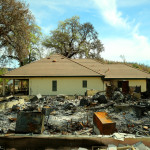WASHINGTON – The U.S. Department of Homeland Security’s Federal Emergency Management Agency (FEMA) today announced that federal disaster assistance has been made available to the state of Texas to supplement state, tribal and local recovery efforts in the area affected by severe storms, tornadoes, straight-line winds, and flooding during the period of October 22-31, 2015.
The President’s action makes federal funding available to affected individuals in Bastrop, Brazoria, Caldwell, Comal, Galveston, Guadalupe, Hardin, Harris, Hays, Hidalgo, Liberty, Navarro, Travis, Willacy, and Wilson counties.
Assistance can include grants for temporary housing and home repairs, low-cost loans to cover uninsured property losses, and other programs to help individuals and business owners recover from the effects of the disaster.
Federal funding is also available on a cost-sharing basis for hazard mitigation measures statewide.
Kevin L. Hannes has been named as the Federal Coordinating Officer for federal recovery operations in the affected area. Hannes said additional designations may be made at a later date if requested by the state and warranted by the results of further damage assessments.
Individuals and business owners who sustained losses in the designated area can begin applying for assistance today by registering online at www.DisasterAssistance.gov or by calling 1-800-621-FEMA (3362) or by web enabled mobile device at m.fema.gov. Disaster assistance applicants, who have a speech disability or hearing loss and use TTY, should call 1-800-462-7585 directly; for those who use 711 or Video Relay Service (VRS), call 1-800-621-3362. The toll-free telephone numbers will operate from 7 a.m. to 10 p.m. (local time) seven days a week until further notice.
Follow FEMA online at http://blog.fema.gov, www.twitter.com/fema, www.facebook.com/fema, and www.youtube.com/fema. Also, follow Administrator Craig Fugate’s activities at www.twitter.com/craigatfema. The social media links provided are for reference only.
FEMA does not endorse any non-government websites, companies or applications.
FEMA’s mission is to support our citizens and first responders to ensure that as a nation we work together to build, sustain, and improve our capability to prepare for, protect against, respond to, recover from, and mitigate all hazards.
# # #
View post:



